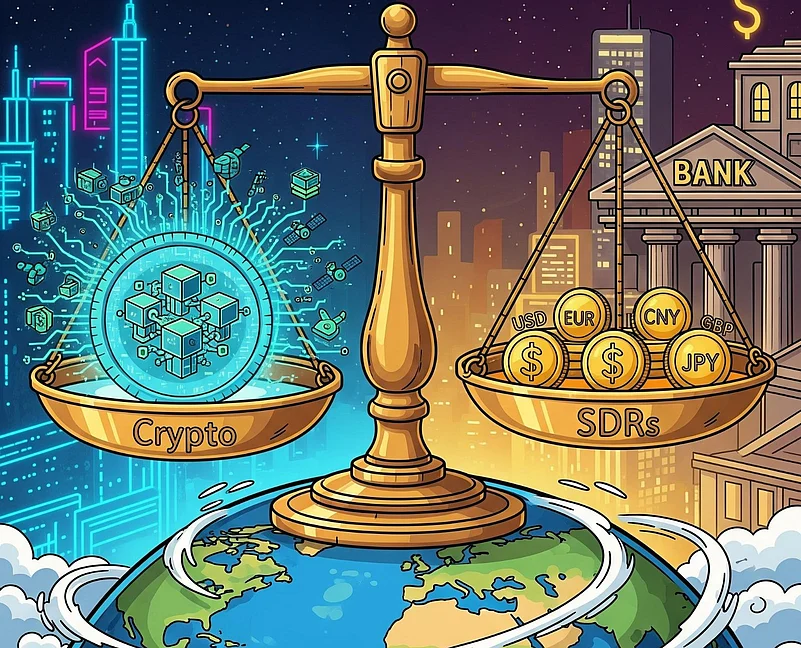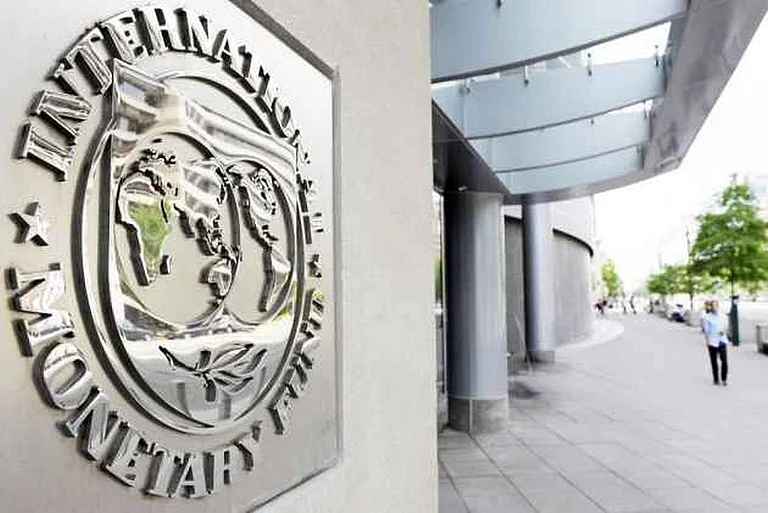The evolving world financial environment holds a special chance: the potential of crypto assets in general, and digital currency specifically, to defy a conventional reserve asset rooted in part on the IMF's Special Drawing Rights (SDRs). Recent progress, including the IMF endorsement of crypto assets, illustrates that it is a suitable time to discuss whether crypto assets possess attributes that can render them a better potential international reserve asset compared to the SDR system. To properly understand the implications of a reserve asset in digital currency, there needs to be an examination of the unique attributes of digital currencies compared to the essential nature of traditional SDRs.
Special Drawing Rights, founded in 1969, act as reserves alongside gold and USD. SDRs stand out as they are valued against a weighted basket of five currencies: USD, Euro, Chinese Yuan, Japanese Yen, and British Pound Sterling. SDRs are most frequently employed by IMF members to stabilize currencies, finance vital imports, and cushion financial crises. For instance, Argentina repaid its IMF loan using its SDRs, which assists its total fiscal load and keeps the reserve level of the country intact. Similarly, Ecuador utilized its SDRs, as guided by its Finance Ministry, to finance government expenses and support reserves. But the availability of SDRs is only to IMF member nations (and a few more), which restricts the extent of availability and usage across nations.
Conversely, crypto assets represent a point of Evolution of Global Reserve Assets in terms of accessibility, transparency, and purpose. In recent times, even the IMF has begun monitoring crypto assets officially and has included them in its Balance of Payments Manual (BPM7). This is a critical shift as it depicts an increasing acknowledgment of the crypto economy on the part of the world financial system. While this is primarily for statistical purposes, it also legitimizes the validity of crypto assets even indirectly to some extent within the arena of global finance.
One of the most important advantages of crypto assets over SDRs is the decentralization and openness of assets. SDRs are centrally managed and coordinated by the IMF and tied directly to the political and economic stability of the donor countries, whereas crypto assets operate on decentralized public blockchain networks that are immutable and transparent. This framework provides a strong defense against the possibility of manipulation that strengthens the potential for additional trust. Additionally, because crypto assets are not tied to any one country's monetary policy, they provide another politically neutral option compared to SDRs.

Beyond transparency, crypto assets also provide unparalleled programmability, as well as inclusivity. Smart contract platforms like Ethereum enable low-cost, cross-border transactions that can be automated in a way that is simply not available with SDRs. The adaptable technology also has the capacity to cut out time and complexity in settlements that would otherwise affect any global financial transaction. While SDRs can only be accessed by governments and key institutions, crypto assets will be accessible to all people, and will bring about inclusion of citizens, businesses, and underbanked areas as well. For emerging economies especially, it also opens new avenues regarding financial inclusion, financial stability, and freedom from the USD or other dominant currencies in the world.
Although these benefits are available, one should appreciate that the existing crypto assets still have significant challenges in the form of, mainly, regulatory clarity, validity, and institutional acceptance. Whereas SDRs are stable and yielding (paying interest) against a basket of currencies, crypto assets experience significant price volatility. Yet, advancements in stablecoin technology, which anchors crypto assets against fiat or commodities, are lessening the volatility issues and making the crypto asset more reliable and stable.
In light of these forces, crypto assets can quite feasibly provide huge potential as an add-on - if not alternative - to SDRs. The proposed application of crypto-assets by institutions is increasing and possesses an inherent strength in decentralization, transparency, programmability, inclusiveness, and efficiency which places them well in the global financial landscape.
While global economic leaders increasingly seek the disruption of crypto assets, most G20 countries are now moving in this direction by establishing regulatory environments to enable them to incorporate digital currencies. The US, EU countries and Japan have already taken notable investments, including some very explicit regulations, as well as futuristic ground rules and guidelines for crypto innovation. Unlike its peer G20 economies, India has experienced a slow and disorganized regulatory response that has left India behind not only its peers but also other global economies.
After all, India already possesses a fast-emerging digital economy, and even the technological capability to dominate Web3. With the consequence being that the longer India remains on the sidelines without explicit regulation, particularly in a space where legislators have now positively welcomed cryptocurrencies, the longer this opportunity goes into list territory with respect to yawning a lead with digital finance innovations. In order to stay in the game in shaping both the future of the international reserve asset arena as well as digital finance, India needs, more than ever before, to align with best global practices in regulation by giving itself a world-class regulatory environment that is appropriate for the future.
























